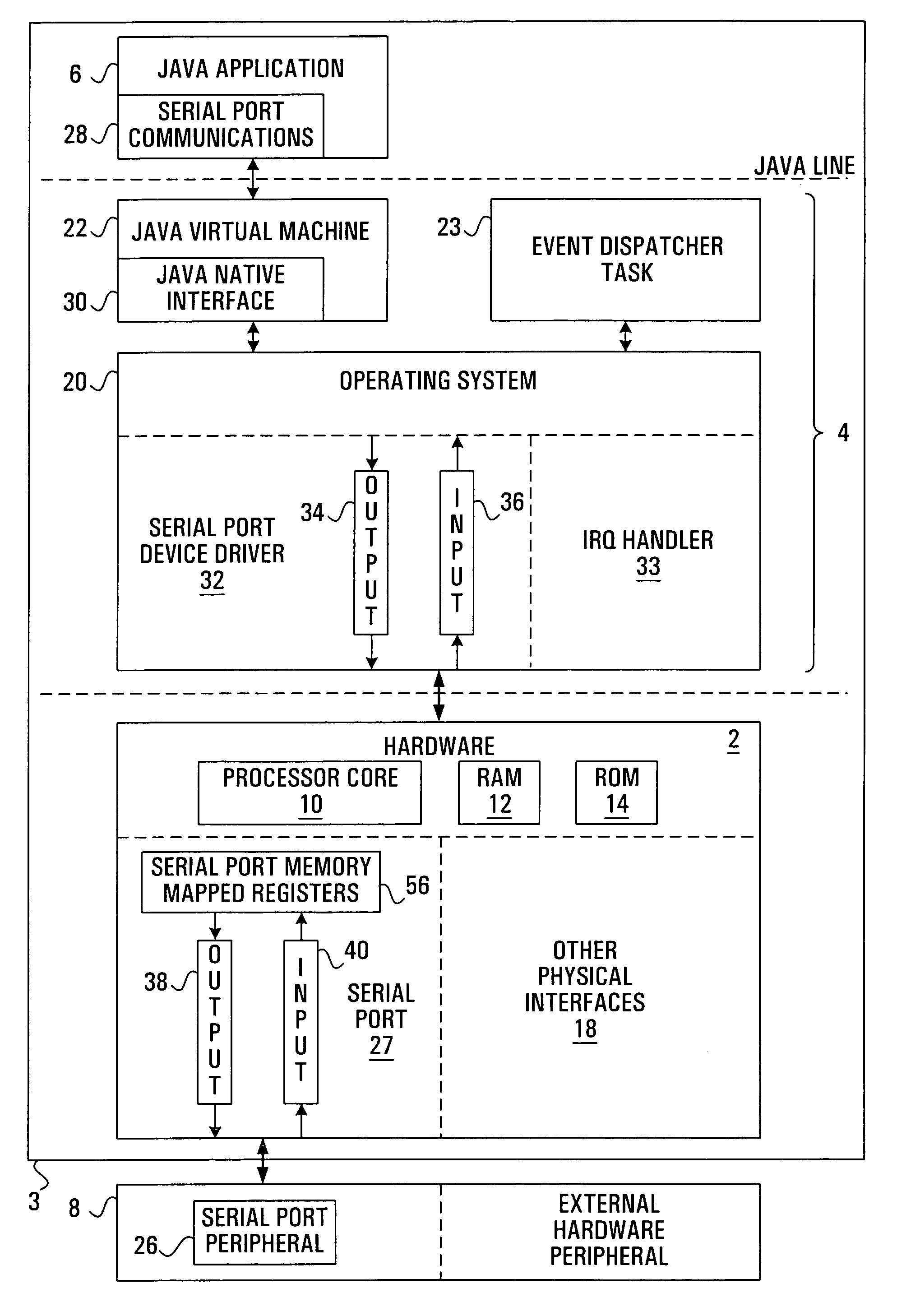Methods and systems for applications to interact with hardware
- Summary
- Abstract
- Description
- Claims
- Application Information
AI Technical Summary
Benefits of technology
Problems solved by technology
Method used
Image
Examples
Embodiment Construction
[0031]Communications from a processor to hardware peripherals are typically done through registers which are mapped to a predetermined address space of the processor. Embodiments of the invention provide systems and methods for anchoring an object in Java, such as an array object, such that it overlaps with the register area of a hardware peripheral. By way of example, FIG. 2 illustrates a typical memory map showing an entire address space running from a lowest address 47 0x0000 to a highest address 48 0xFFFF for a 64 kB memory address space. Usually, a first portion 50 of the address space is reserved for ROM, a second portion 52 of the address is reserved for RAM, and a third portion 54 of memory address space is reserved for registers used by hardware peripherals. The mapping for a given peripheral, such as a serial port peripheral for example, has been expanded, as generally indicated by 56. Typically, there are a number of addresses 58 (four in the illustrated example) which ma...
PUM
 Login to View More
Login to View More Abstract
Description
Claims
Application Information
 Login to View More
Login to View More - R&D
- Intellectual Property
- Life Sciences
- Materials
- Tech Scout
- Unparalleled Data Quality
- Higher Quality Content
- 60% Fewer Hallucinations
Browse by: Latest US Patents, China's latest patents, Technical Efficacy Thesaurus, Application Domain, Technology Topic, Popular Technical Reports.
© 2025 PatSnap. All rights reserved.Legal|Privacy policy|Modern Slavery Act Transparency Statement|Sitemap|About US| Contact US: help@patsnap.com



